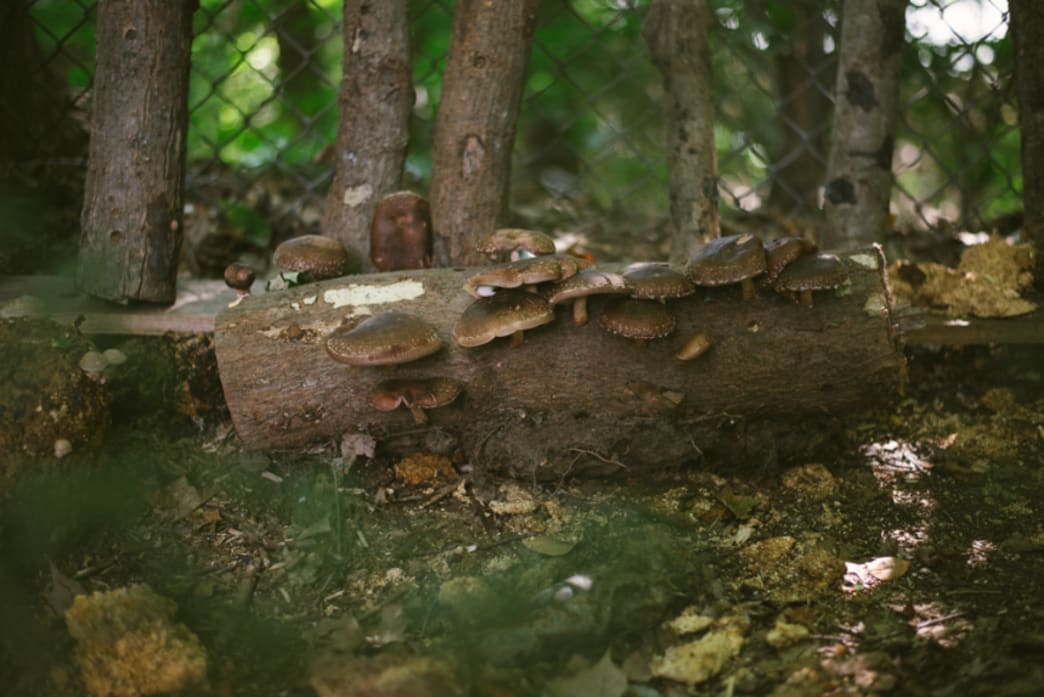Discover a deep dive on mushroom cultivation at home with our Home Mushroom Cultivation Online Class
Mushroom cultivation at home is gaining popularity, especially once people realize that they can easily be growing pounds of fresh food consistently.
Here at Fungi Ally we have a variety of online courses for mushroom farmers of various sizes. Below we are going over some of the info you will receive when you take our online course on mushroom cultivation at home. If you find this information interesting and useful, then you should definitely consider taking this online course, which can be done at your convenience from the comfort of your home.
Understand the benefits of taking our Home Mushroom Cultivation Online Class
This online course will introduce you to about nine different methods of mushroom cultivation that can easily be done at home with no special equipment or technical skills.
We will go over the common mushrooms that are cultivated, what exactly mushrooms and fungi are, and how we can begin working with mushrooms and fungi in many more ways. This course is for anyone interested in growing mushrooms for themselves and their family with a little extra for their community.
This information will help you get a deep enough understanding of mushroom cultivation at home that you should be able to grow up to 20 pounds each week if desired. Of course, you could also go much smaller, like a production of two or three pounds each week. It’s all dependent upon you.
This class on mushroom cultivation at home will share tips on growing the following mushroom species:
Shiitake mushrooms: Shiitakes are the gateway mushroom into the field of specialty mushrooms. Shiitakes are known by many consumers and have a great taste and texture. Shiitakes have a high protein content around 18% (dry weight), and a complete profile of amino acids.
Shiitakes have a strong umami flavor and stand out in culinary dishes. The stems of shiitakes are typically discarded or made into stock and the caps are cooked. They can also be dried and still maintain a high quality of flavor and texture. Shiitakes are great in stir fries, miso soup, or roasted on their own!
One of the great things about shiitake mushroom cultivation is it can happen at both low- and high-tech scales. From backyard woods to large commercial farms, shiitakes are now widely cultivated in the United States. All of these things give this mushroom a lot of versatility and potential for cultivation on any scale from homestead to large business.
In this online class on mushroom cultivation at home you will learn how to grow shiitakes on logs and totems.
Oyster mushrooms: Oyster mushrooms are generally sweeter than shiitakes, with a more subtle flavor. They can be extremely beautiful as well, coming in grey, blue, yellow, and pink. Some oyster mushrooms, like the king oyster, have a firm texture similar to chicken. While many other oysters, like the golden or pink oyster, are more delicate in texture. The caps are the most desirable part, but the stems can be chopped finely and cooked, too. Oyster mushrooms are amazing with fried eggs, omelettes, or in pasta dishes.
If you are interested in growing mushrooms, oysters are a great one to start with, as they grow on a wide range of materials and grow very quickly. In this online class you will learn how to grow oysters on straw and coffee grounds.
Lion’s mane mushrooms: Lion’s mane is a delicious mushroom with cascading spines or teeth. It can bruise easily so growing them at home makes the most sense for the freshest, firmest lion’s mane around.
Lion’s mane starts out pink without any of the spines. As it grows the spines start growing and get longer, until they point straight out. Those start to cascade down before harvest.
With a lobster-like taste, this mushroom is fantastic sautéed with some butter and lemon juice or used for faux crab cakes. Lion’s mane soaks up the flavors it is cooked with, so it goes great in many types of meals.
Chestnut mushrooms: Chestnuts are a nutty mushroom that grows in clusters. The caps of the chestnut mushrooms can be dry to slightly slimy, and the entire cap and stem can be eaten. It is best to dice the stem into smaller pieces for cooking purposes. The slimy texture can be avoided by cooking them longer, which will lead to a slight crispiness.
Chestnuts have a beautiful chestnut brown coloring and can have slightly ornamented caps and stems. Baby mushrooms chestnuts have spikes that stick out from the cap of the mushroom.
The strong flavor of this mushroom lends it well to being used in rice dishes and stir fries, giving the meal a stronger umami flavor and texture. Chestnut mushrooms, along with most specialty mushrooms, have no fats in them but a complete profile of amino acids.
Wine cap mushrooms: Wine cap mushrooms are a great option for growing your own food at home, whether you live in a city or in a rural part of the country.
Wine caps look much like a portobello mushroom with a purple gills and a burgundy cap. The taste and texture is similar to asparagus and it can be used in a variety of dishes. Wine cap is an aggressive and social mushroom that is one of the easiest mushrooms to begin growing.
Culinary enthusiasts have stated that the mushroom pairs well with any of the following: lemon juice, fennel, nutmeg, pasta, polenta, quinoa, ramps, and rice. It also goes well with meats, fishes, or poultry, or in soups and stews.
Expect this mushroom to fruit twice per year if you are living in the Northeast U.S. and growing this mushroom outside in your yard.
In this online course you are taught how to grow wine cap mushrooms on wood chips outside. They can make a great addition to your garden as well.
This online course for mushroom cultivation at home includes:
- (3) Recorded 90 minute lectures–Lifetime access
- Further videos and resources to watch
- Readings from a variety of books to deepen your understanding
- Access to a Facebook group with other Fungi Ally Alumni

